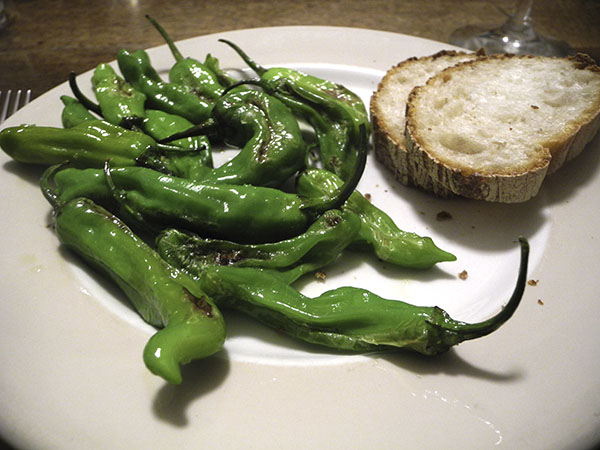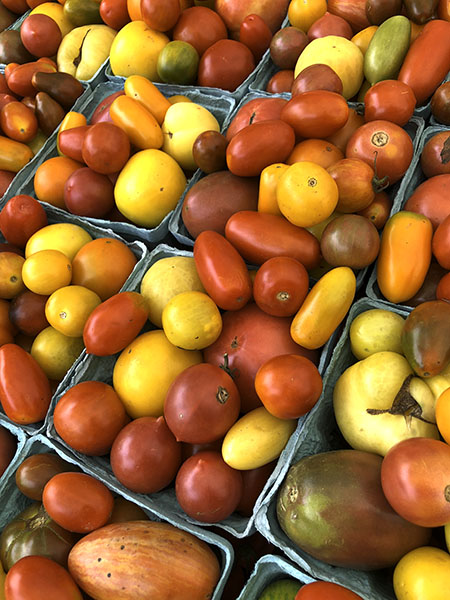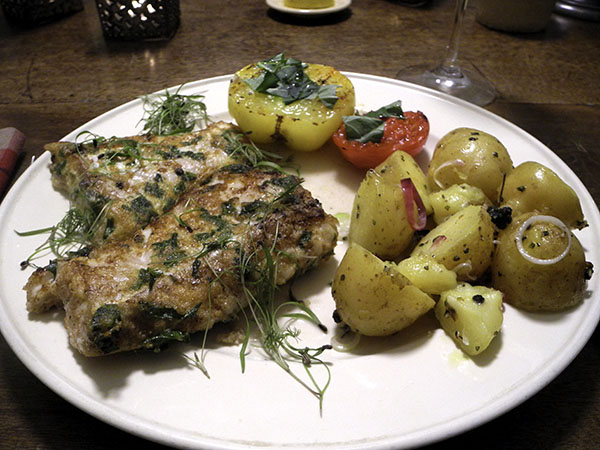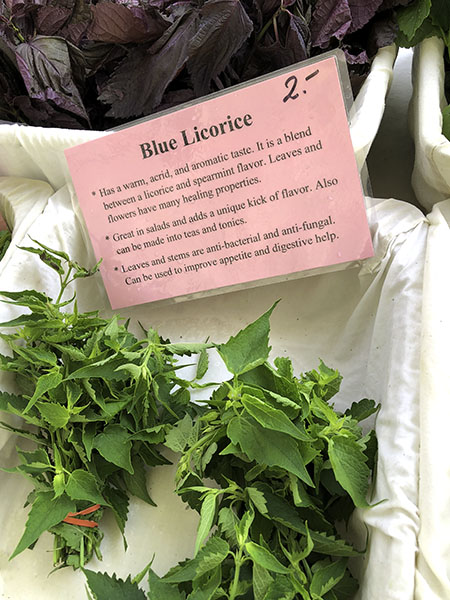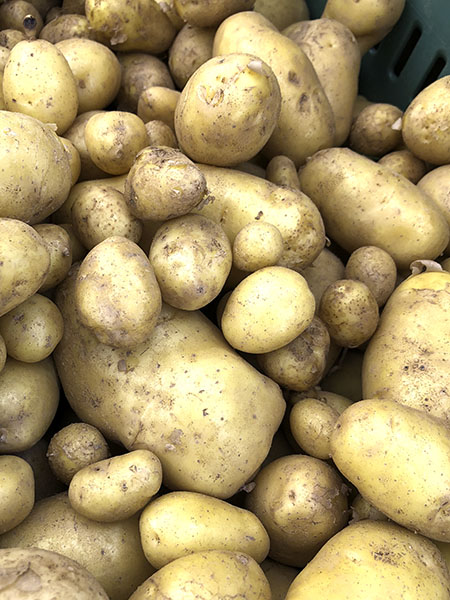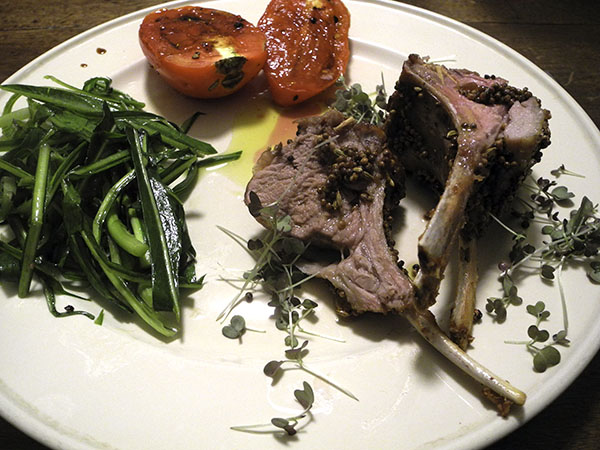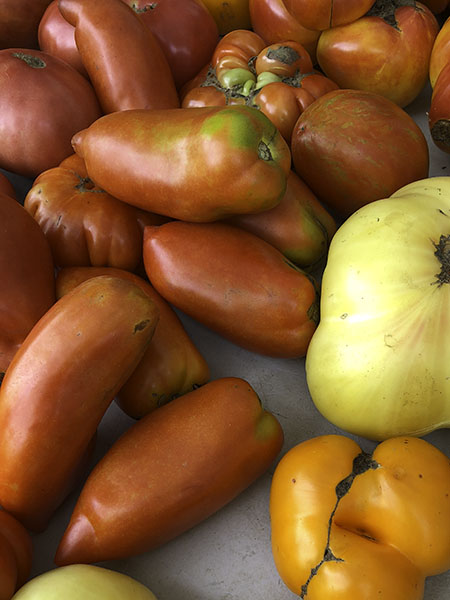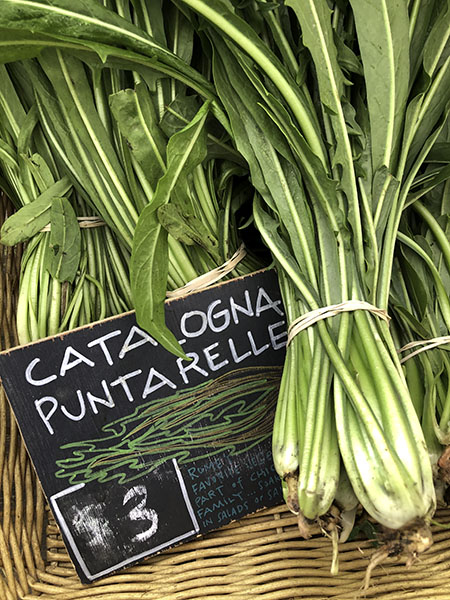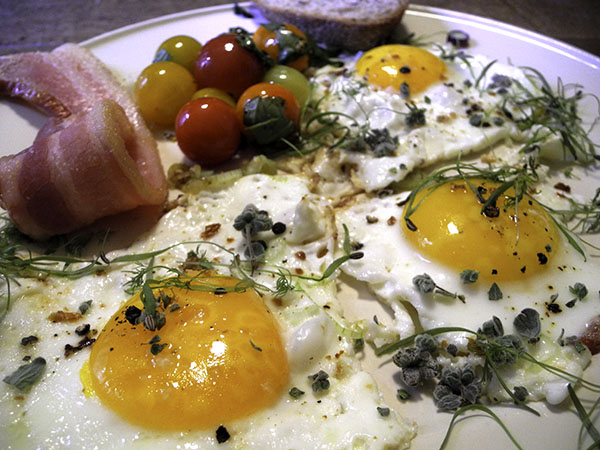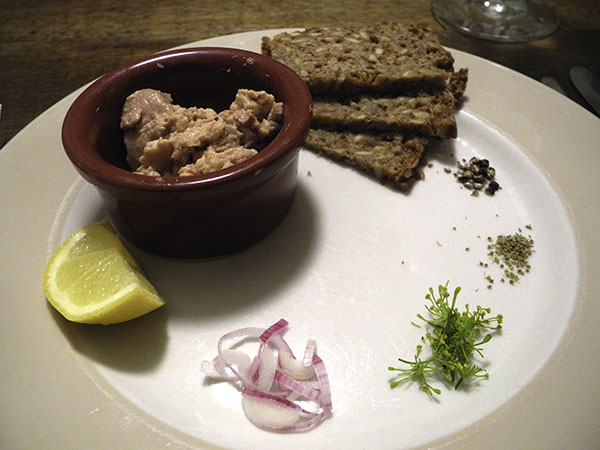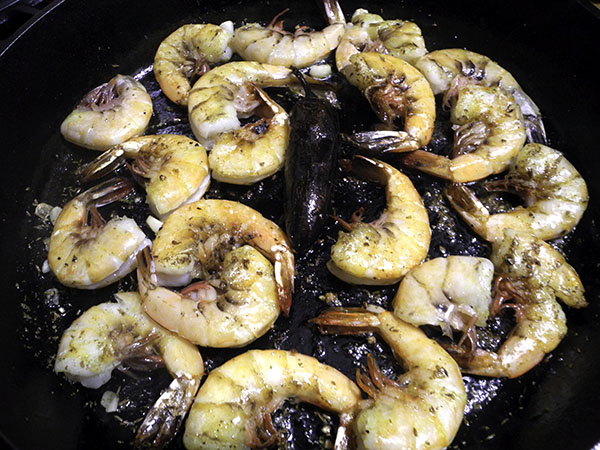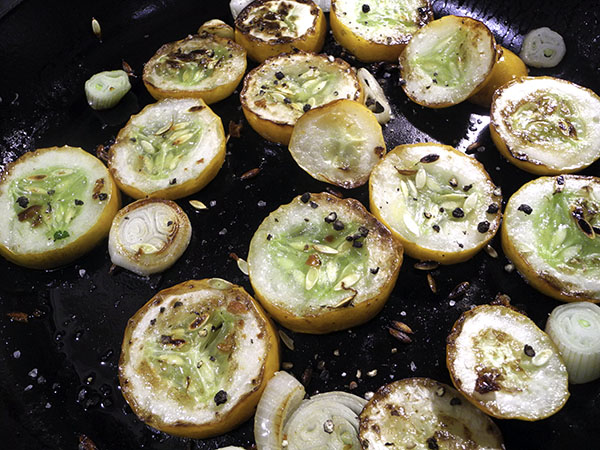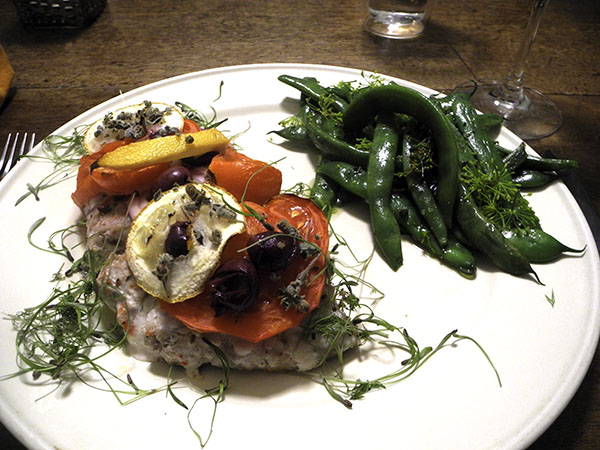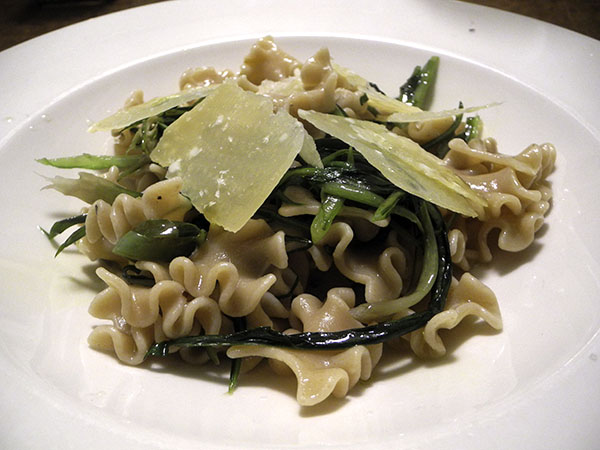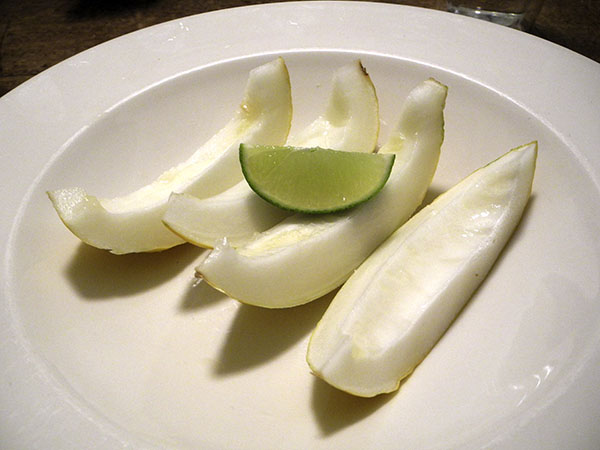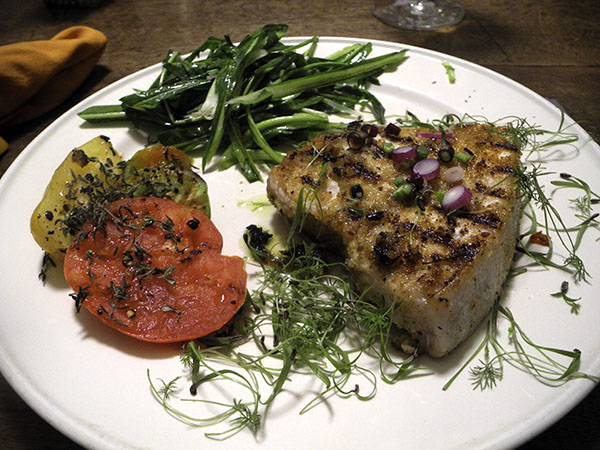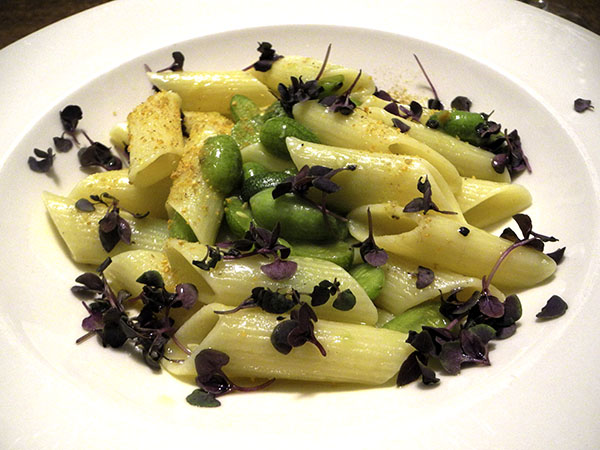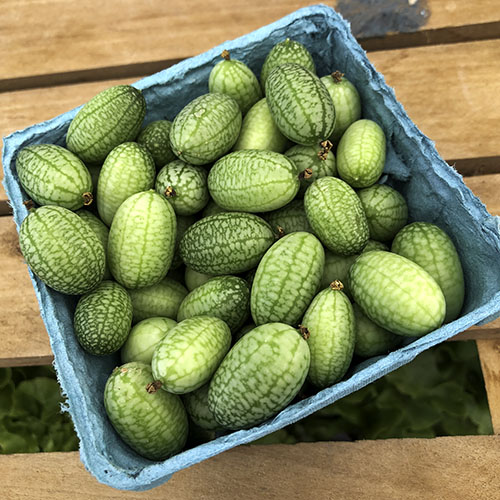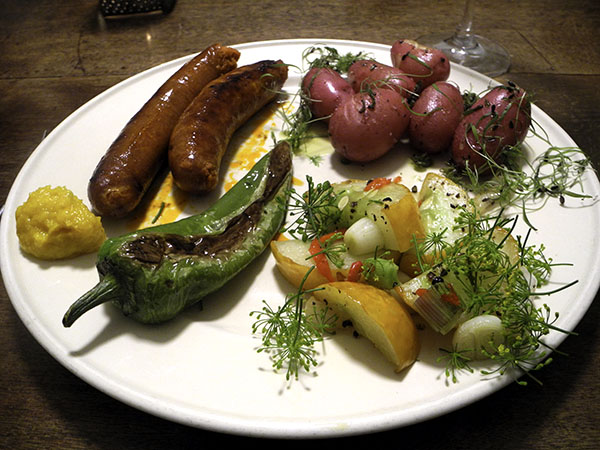
I had no idea what I was doing until I did it.
I started with the chorizo, picked out the cucumber, and then the potato, but because the cucumber was small and because I had no idea when I would use a potential third vegetable if it wasn’t in this dinner, 2 mild peppers were also tabbed, almost at the last moment.
The table welcomed a bit each of Spain, New York City (Yorkville and Chelsea), India, Vermont, Venezuela, Pennsylvania, New York’s Orange County, Connecticut, New Jersey, New Mexico, the Rhineland, and seventeenth-century France. The meal had no dominant ethnicity, but the plate looked pretty interesting, and it was all very tasty.
- four links of ‘Spanish Style Chorizo’ from Schaller & Weber’s Yorkville store, pan-fried inside an oval enameled cast iron pan, served with an apricot mustard from Dixon Farm Stand in the Chelsea Market
- one 6-ounce ‘Poona Kheera’ cucumber (a variety sometimes labelled, less accurately, as a ‘Sikkim cucumber’), from Norwich Meadows Farm, sliced unpeeled into rounds 2 cm thick, sautéed in a little olive oil inside a medium antique high-sided copper pot over a medium-high flame, lightly-sprinkled with salt each time (I should have allowed the pieces to begin carbonizing, but I was otherwise distracted), adding a few 2 cm-thick slices of a fresh bulbous shallot from Tamarack Hollow Farm and most of an aji dulce pepper (not hot) from Eckerton Hill Farm more than half way through, seasoned with freshly-ground black pepper, arranged on the plates, garnished with fresh dill buds from Willow Wisp Farm
- small red skinned new potatoes from Willow Wisp Farm, boiled in well-salted water, drained, dried in the still-warm large vintage Pyrex glass pot, rolled in a little olive oil, seasoned with sea salt and freshly-ground black pepper, tossed with basil buds from Windfall Farms and garnished with bronze micro fennel from Two Guys from Woodbridge
- two Anaheim peppers from Oak Grove Plantation seared in a little olive oil inside a small vintage seasoned cast iron pan until they had blistered, sprinkled with sea salt and black pepper
- the wine was a German (Pfalz) red, Ein Liter Rhodt, Stefan Meyer 2015 (a blend of Portugieser, Saint Laurent and Dornfelder), from Astor Wines
- the music was Lully’s 1686 tragédie en musique, ‘Armide’, Philippe Herreweghe directing the Collegium Vocale and La Chappel Royale
